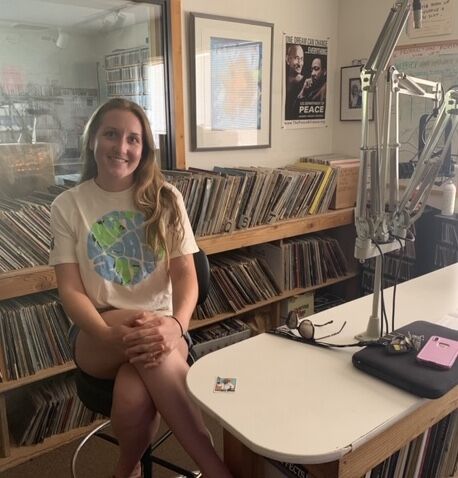Some information may be outdated.
Even after they’re extinguished, wildfires continue to sculpt landscapes and alter water flows. This week, we talk with Natalie Gillard, a graduate student in watershed sciences at Utah State University, who explains how wildfires can trigger massive floods and landslides, and how these events impact fish and downstream ecosystems.
Science Moab: How does fire affect the way water moves across a landscape?
Gillard: Wildfires can create the perfect conditions for floods. In heavily forested areas, a lot of precipitation may never actually hit the ground. But after a fire, much of the vegetation is removed so a higher volume of water moves across the landscape. Without that vegetation, there is less evapotranspiration, which is the way vegetation releases water back into the atmosphere. In addition, if the vegetation burns at a high enough temperature, the soil actually can become water-repellent, preventing water from seeping into the soil. So because you have more water reaching the surface, less of it emitted out into the atmosphere and less absorbed by the soil, you get this large increase in overland flow and flooding. Larger floods are also able to carry more sediment, leading to massive landslides and debris flows.
Science Moab: How large does a fire need to be to cause these floods and landslides?
Gillard: Typically, you need a moderate- to high-severity fire. We studied the Twitchell Canyon Fire from July 2010, which was in Utah near Brian Head. In a specific basin that we studied, 16% of the area was burned at a high severity level. You might think 16% doesn’t seem that large—but afterward, we saw a sixfold increase in flooding in the area.
Science Moab: And does that happen at a certain time of year?
Gillard: Intense storms usually follow wildfires, and there are a couple of different theories as to why. In addition to typical orographic lifting, which is where air is forced over a mountain range and becomes unstable, the storm is extra unstable because of the black surface created by all the ash. This trend in large storms following wildfires, with an increase in flooding, has been seen to last almost a decade if the wildfire is hot enough. After the Twitchell Canyon Fire, it took about 10 years for the area to return to regular flood events.
Science Moab: What do these post-fire flood events tend to look like?
Gillard: A debris flow is basically a river of mud and boulders and trees. It takes everything down with it. So you might have a small tributary or stream that the system is just going to completely blow out after a fire. The landscape can drastically change in just minutes.
Science Moab: How does that change the structure of these rivers and streams, and impact the fish living there?
Gillard: Wildfires have both positive and negative impacts on fish habitat. They bring sands and large boulders and everything in between back into the river system. The addition of large woody debris can be really good for natural fish habitat. The problem is that the proportion of fine sands is very large and that can be really harmful to native fish species. When you get a bunch of sands into a new river system, it clogs all the pores in the soil. Clogged pores can be a problem because fish need to be able to dig “redds,” which are basically nests for their eggs. Then, when the eggs hatch, the baby fish need to be able to swim through the pores and make it into the mainstream of the river. In addition, water needs to be able to move through the pores of the soil, because water is carrying dissolved oxygen and nutrients that the fish need. The input of fine sand can really stop these mechanisms from happening.
In addition, if a fire burns at high severity, it’s destroying a lot of the shade around the stream, which changes stream temperatures. This is a big problem because fish have a high sensitivity to changes in temperature. It can actually act as a physical barrier: they will not go to a place that is too hot for them. This can be a problem because it creates a habitat more inviting for invasive species.
This interview has been edited for length and clarity. To learn more and listen to the rest of Natalie Gillard’s interview, visit sciencemoab.org/wildfire-wildlife.
Appreciate the coverage? Help keep local news alive.
Chip in to support the Moab Sun News.





